More evacuations in Southern California wildfire
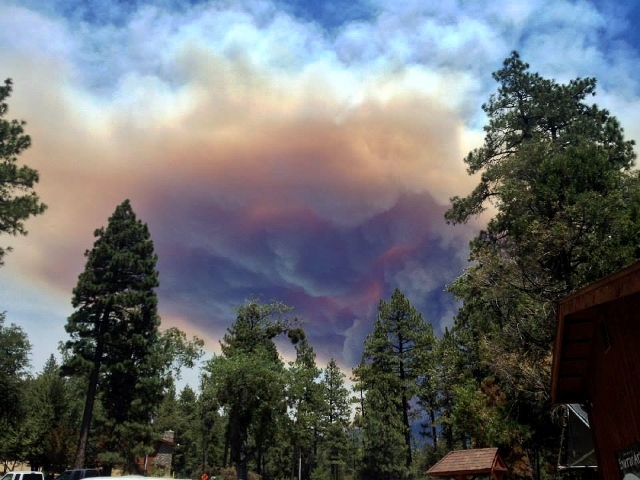
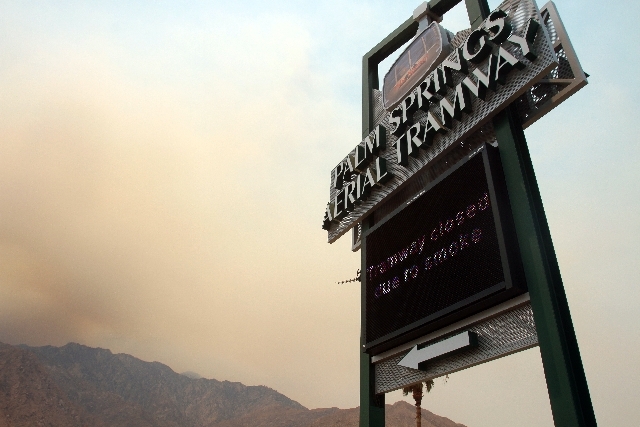
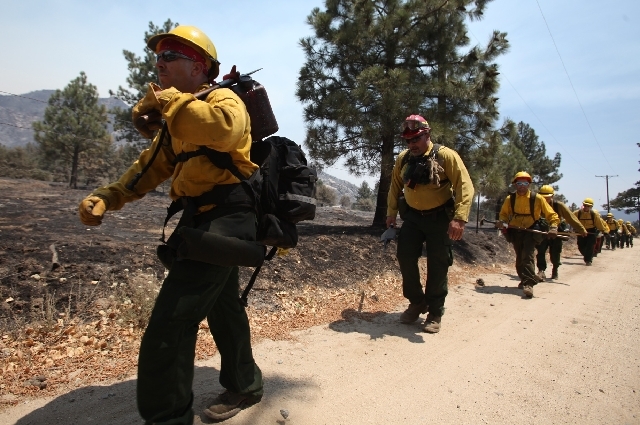
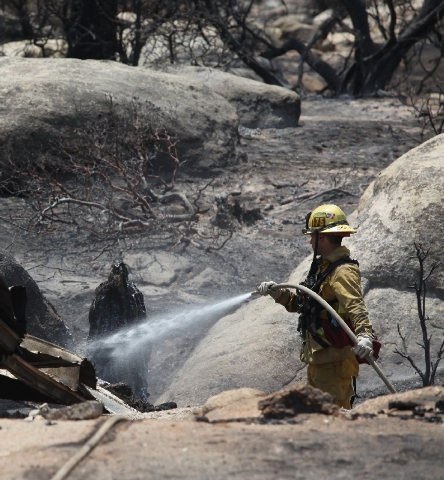
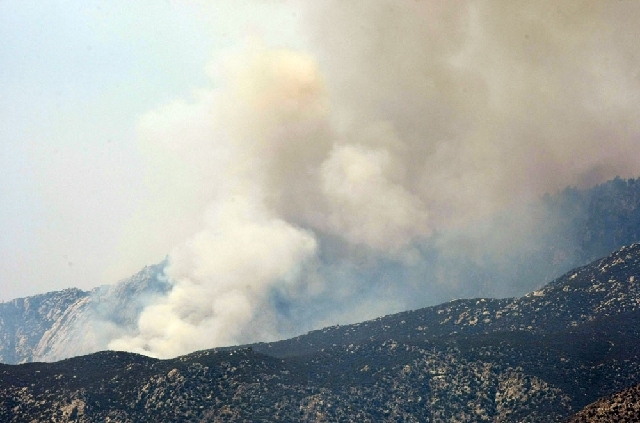

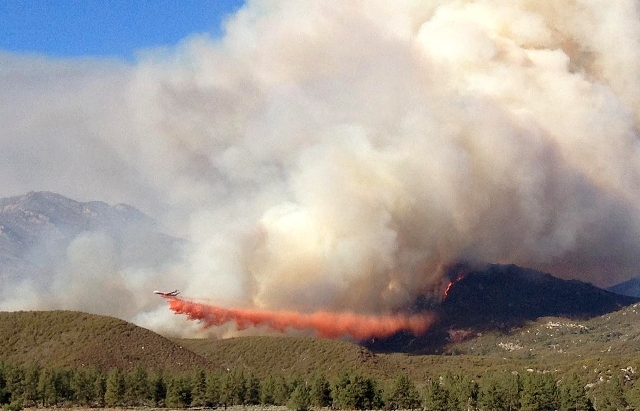
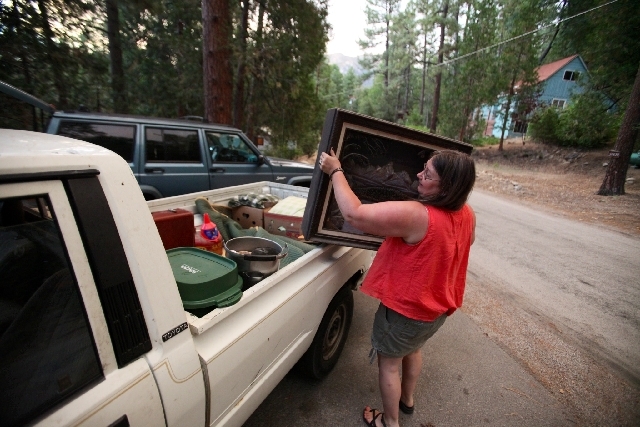
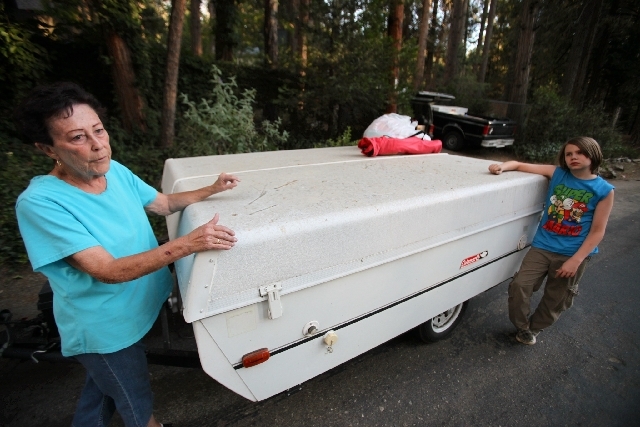
IDYLLWILD, California — Residents of another 700 homes were advised to retreat to safety on Friday as crews fighting a wildfire in the mountains above Palm Springs grew increasingly concerned about the possibility of unstable weather and erratic winds.
The voluntary departures by people in Pine Cove, on the fire’s western flank, came in addition to mandatory evacuations involving 6,000 others who spent a third day away from home as the fire spread in three directions.
The blaze in the San Jacinto Mountains has expanded to roughly 42 square miles and was 15 percent contained, U.S. Forest Service spokeswoman Kate Kramer said.
Some communities on the eastern edge of the fire were reopened to residents, but about 5,600 homes remained under potential threat.
The fire was only about two miles from Idyllwild on its western flank and the same from Palm Springs, below on the desert floor. However, it was burning relatively slowly with the most active area south of town.
An enormous plume of smoke could be seen from Palm Springs.
A storm front headed toward the region could provide some relief with cooler weather and a chance of rain, fire spokesman Capt. Mike Lindbery said.
But it could also make the situation much more volatile because of an increased chance of thunderstorms and lightning strikes, along with increased winds.
Combined with hot air on the ground, the unstable air could create a strong updraft that draws smoke high into the atmosphere.
If the smoke column rises too high, moisture at the top could freeze and the weight of the ice could cause the column to collapse, creating a powerful downdraft in all directions, Lindbery said.
“We’re very concerned because this is the condition in the past that has definitely caused big firestorms and the death of citizens and firefighters,” he said.
“It makes it so there are not a lot of places that are safe.”
Popular campgrounds, hiking trails and a 30-mile section of the Pacific Crest Trail, which runs from the Mexican border to Canada, remained closed. A small stretch of a local highway was also closed.
Some 3,300 firefighters, aided by nearly 30 aircraft, battled the fire, which stretched from 4,000 feet to 9,000 feet along the mountains. As a result, crews could be working in temperatures ranging from a comfortable 75 to a scorching 110 degrees.
The arriving storm front could bring a 20 percent chance of rain and 15-24 mph winds with gusts to 40 mph that could push the flames in erratic ways.
The fire, which began Monday, has burned six homes and mobile homes, one cabin, and more than a dozen other buildings. One home also was damaged.
Idyllwild resident Steve Hamlet had been watching a growing smoke cloud since Monday and evacuated his home with his 12-year-old grandson as flames crept closer.
On Friday, he worried whether he had packed the right things — and worried about his wife, who had stayed behind.
“Do I take pictures? Do I take bills? Do I take legal documents? Or do I just take my grandson and I?” Hamlet said at a local evacuation shelter.
He and his grandson tried to check on his wife Thursday but were turned away at a road block after driving 25 miles up the mountain, he said.
“She knows enough when it’s time to leave,” he said.
Like Hamlet, more than 100 evacuees, including campers rousted from spots in the danger zone, spent the night at shelters located at area schools.
“They’re stressed … and they’re anxious to hear news of their homes,” said Red Cross spokeswoman Amy Laurel Hegy.
Authorities said the fire was human-caused, but they wouldn’t say whether it was accidental or intentional. There have been no reports of injuries. The fire has cost $8.6 million to fight so far.
The fire was about 12 miles from the site of the 2006 Esperanza wildfire that killed five U.S. Forest Service firefighters and destroyed 34 homes and blackened an area that hadn’t burned in many years.
———
THE ASSOCIATED PRESSs Gillian Flaccus in Santa Ana and Shaya Tayefe Mohajer in Los Angeles contributed to this report.












